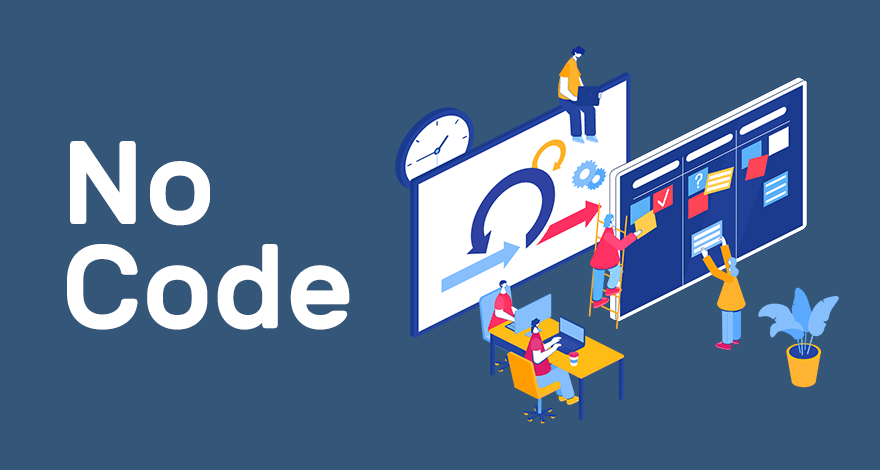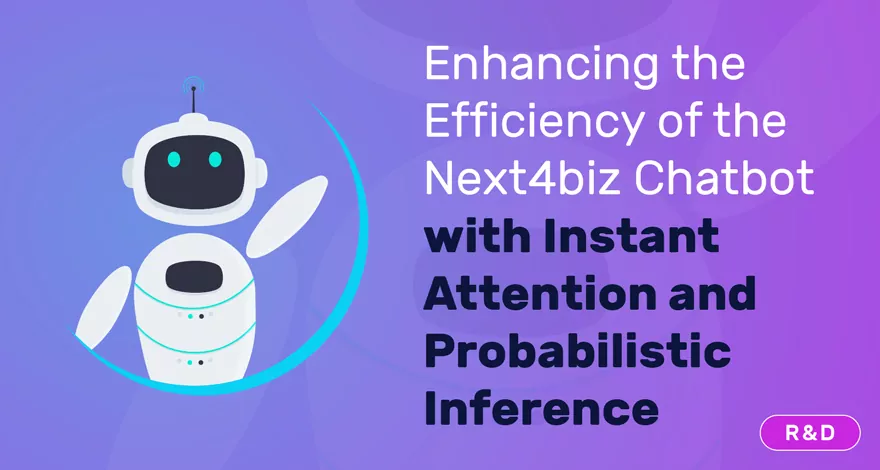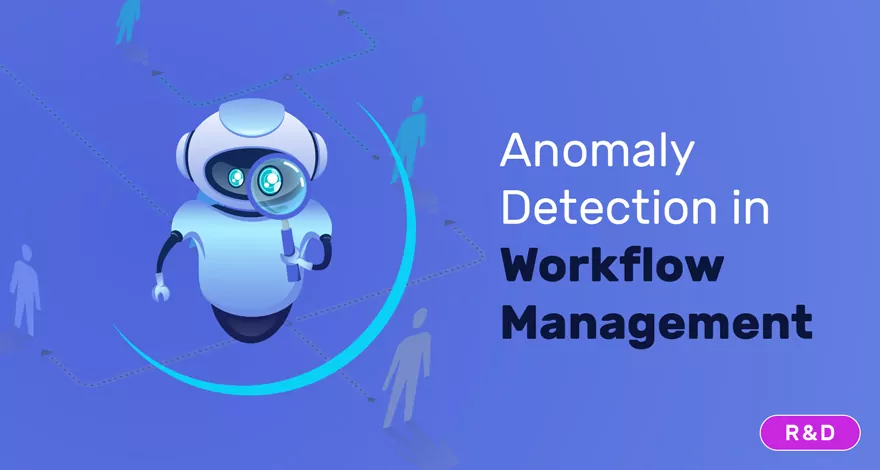Demo

Thanks to the dramatic transformation in the software world, on the one hand, programming languages and methods for learning them are becoming less complex than they used to be. On the other hand, tools for sharing knowledge make it possible for an ordinary user to easily acquire new and modern coding skills through online educational platforms.
What Exactly is “No-Code”?
No-code platforms allow the development of applications without requiring special coding or programming knowledge or even technical knowledge. These platforms use visual modeling methods where components can be dragged and dropped in logical sequences instead of coding.
Thus, they address two significant issues in software development and adaptation:
- Programming and coding are complex tasks that require a long time.
- It is challenging to find people who know programming and coding.
According to a survey conducted by research company Forrester in 2019, No-code platforms can make the development and adaptation process up to 16 times faster. This speed shortens the time for applications or changes to materialize. Speed, as we know, is one of the most crucial competitive advantages in this era. No-code solutions, due to their development speed and ease of adaptation, relieve both the business and IT by allowing business unit users to manage and adapt their applications directly without waiting in line in the IT backlog.
But How?
Traditional programming is a difficult, laborious job requiring special skills, mostly done through text-based and numerical languages. No-code design, however, helps individuals without programming knowledge to easily and quickly develop or adapt applications using graphical interfaces. With visual elements and drag-and-drop functions, even an ordinary application user can develop or adapt applications once they learn how to place and customize the right elements correctly.
It should be noted that no-code platforms cannot completely replace your existing IT unit. Instead, they function as an extension of your IT team, enabling stronger collaboration between business units and IT. Additionally, adopting a no code platform does not happen overnight. It requires the right vision, effort, control, and guidance. However, when done correctly, you achieve very efficient results with much less effort.
4 Key Values a No-Code Platform Brings to Your Business:
- Time
- Flexibility
- Key User
- Control and Transparency
Alongside the direct and indirect benefits listed above, some misconceptions about no-code solutions exist. Let’s address these:
- No-code solutions allow everyone to create an application instantly (WRONG)
No-code platforms significantly reduce the barriers for non-developers to develop software applications. However, your key users still need basic (and repetitive) training to fully understand the platform. - No-code can completely replace professional programmers (WRONG)
No-code platforms can be optimized with the collaboration of key users and your IT department, fostering a collaborative relationship between teams. - You cannot create complex applications with high business value (WRONG)
With the collaboration of IT and the layers of no-code platforms that allow traditional coding, you can create complex, high-value enterprise-level applications. - No-code development lacks security (WRONG)
Some no-code platforms are designed to be managed by IT. Many operate securely from the cloud services and have international certifications for information security, such as ISO 27001, ensuring the security of your data. This centralized infrastructure and governance strategy allows key users to freely develop their applications from web browsers while also providing a more secure enterprise application solution through continuous audits and controls.
Things to Consider When Choosing No-Code Platforms
- Who are your users? Who will use your platform? What are their competencies?
- What are your needs? What are the needs that lead your business to use this platform? What needs can you address with software?
- Does the platform have support services? How is the technology and product support? Is there an institutionalized and competent support unit that you can reach out to?
- What are the product or solution features? What types of problems or processes will it help you solve? What is its policy for renewal and development?
- To what extent can IT intervene if needed? What administrative rights or responsibilities will IT have over the application?
What Can You Do Without Code?
Through no-code platforms, you can create solutions for various problems. You can optimize existing processes and develop solutions for areas such as customer service management within your organization.
Here are some examples of the most common application types for no-code platforms:
Corporate Back-Office Applications: A back-office application is the backbone of an organization’s internal operations. These applications are entirely for employee use. A no-code platform uses pre-built back-office modules to get the business up and running as quickly as possible. Users can access all essential features they need as soon as the setup is complete.
Mobile Applications: Today, mobile applications are more than just a convenience for easy access. They have become essential for almost every business, allowing users to work even when outside the office and making it easier to control and track work. A successful mobile application should offer everything a web application can do while on the move. No-code platforms allow for the development and use of applications across multiple devices. They can even facilitate the immediate creation of a mobile version of a no-code web application.
 One of the most widespread and powerful examples of no-code solutions is the Next4biz platform, which enables you to manage all sales, marketing, and customer service management functions end-to-end with defined processes. An effective Customer Relationship Management (CRM) system is the key to commercial success. You need to keep the connection between the right products and the right customers short and straightforward. Thanks to no-code usability, you can have a system you develop and strengthen every day for your network and business processes.
One of the most widespread and powerful examples of no-code solutions is the Next4biz platform, which enables you to manage all sales, marketing, and customer service management functions end-to-end with defined processes. An effective Customer Relationship Management (CRM) system is the key to commercial success. You need to keep the connection between the right products and the right customers short and straightforward. Thanks to no-code usability, you can have a system you develop and strengthen every day for your network and business processes.
For detailed information on the features of CRM, you can review the content “What Are the Features of CRM?“.
Why Do Organizations Need No-Code Solutions?
Today, all companies have somewhat transformed into technology companies. Thus, software development or adaptation is now everyone’s business. In a market where customer experience is constantly evolving and becoming increasingly competitive, applications that support the smooth operation of the business make the connection between companies and customers smoother. In this environment, organizations that cannot keep up with digitalization are inevitably left behind.
With the rise of digital innovations, the adoption and management of a no-code platform will continue to emerge as new solutions that not only take the burden out of platform adaptation but also increase organizational efficiency, accelerate your business, enable higher value-focused collaborations between business units and IT, and help your business stay a step ahead in the competition with the results obtained from the platform’s outputs.







